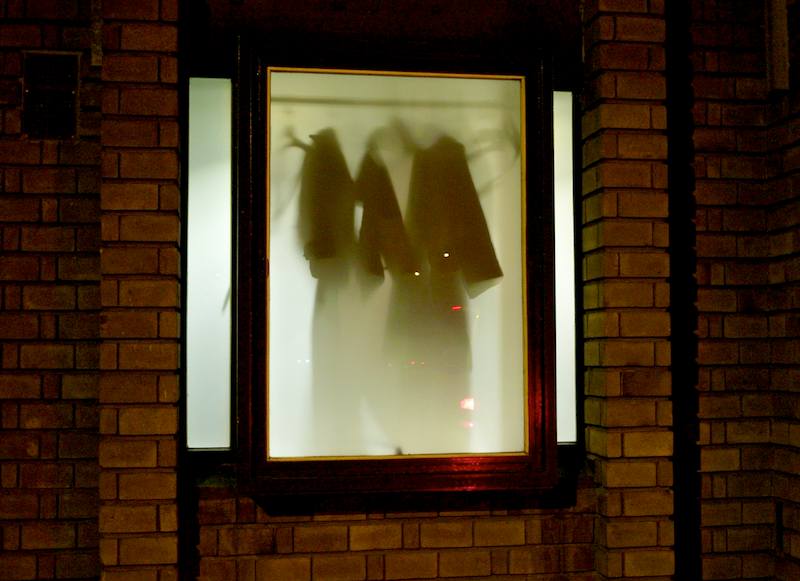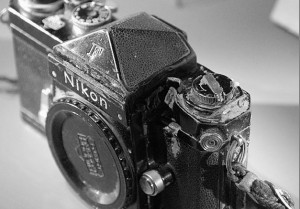Fascinating anecdote in The Online Photographer blog about an encounter with Henri Cartier-Bresson.
I had expected to encounter the gentle soul of a poet. Instead, the quirky man to whom I was introduced was edgier than I could ever have imagined, possessed of a sharply caustic intellect that, I realize in retrospect, might actually have been calculated to put people off—or perhaps just people like me. He was, I’d been told, an aristocrat. He talked of his growing frustration with (or maybe it was disdain for) photography, and his concomitant need to return to his roots: drawing and painting, the few examples of which I’d seen had left me cold, left me wondering how a great master in one field would fail so completely to recognize his mediocrity in another. But no matter. If Henri Cartier-Bresson chose to be full of himself, I was sure he’d earned the right. Genius is as genius does.
At one point, a young man with a Nikon F appeared at the open door. I paid him little mind; at ICP, one regularly encountered young people carrying cameras, all eagerly shooting each other’s nooks and crannies as they earnestly went about learning how to make incisive pictures. But this fellow was different; he seemed barely out of his teens—if indeed he was—and he appeared to be genuinely starstruck. It is not often one gets to meet one’s true-life hero in the flesh.
“Monsieur Cartier-Bresson,” the young man exclaimed in what sounded like his best prep-school French as he brought his Nikon to his eye, moved in and squeezed off a series of exposures with, I think, a 105mm lens. At the last ka-thunk of the mirror, Cartier-Bresson sprung to his feet, literally sprung as if his wiry body had been coiled tight, just waiting for a reason to release itself.
“You must not photograph me!” he shrieked, his English suddenly crystal-clear. “No one is allowed to photograph me! Everyone must know that…”
The kid apologised and withdrew, but C-B pursued him.
Such a show of respect was apparently too little, too late for Cartier-Bresson, whose face by now was beet-red. He chased the young man out the doorway into into a corridor, screaming at the top of his lungs that without his cherished cloak of anonymity he could not continue to go unnoticed among the people of the world. Encumbered by fame and celebrity, how could he photograph freely? He would be recognized at every turn.
My final mental image of the sad turn of events is of a raging Frenchman having a full-out tantrum, his arms waving, his charged body literally jumping up and down, his intense eyes suddenly turned wild, right in the face of this by-now completely humiliated and defenseless young man who, at first backed against a wall, now slid down to the floor, his body sobbing, his trembling hand reaching out, if memory serves, to offer what I took to be a partially exposed roll of film as penance.
I could not help but reflect on all those unsuspecting individuals whose identities, whose very souls, had been captured, dissected even, by Henri Cartier-Bresson’s revealing eye.
I think that’s unnecessarily generous. Cartier-Bresson made a handsome living, and established a great artistic reputation, mainly by photographing people without their permission — in many cases immortalising their fallibility. Think, for example, of those guys he photographed peeing against a wall. Or the couples picnicking by the banks of the Marne. Much though I love his work, if he’d tried that hysterical act on me I’m afraid I’d have been tempted to tell him to go f*** himself. And photographed him as he did so.



